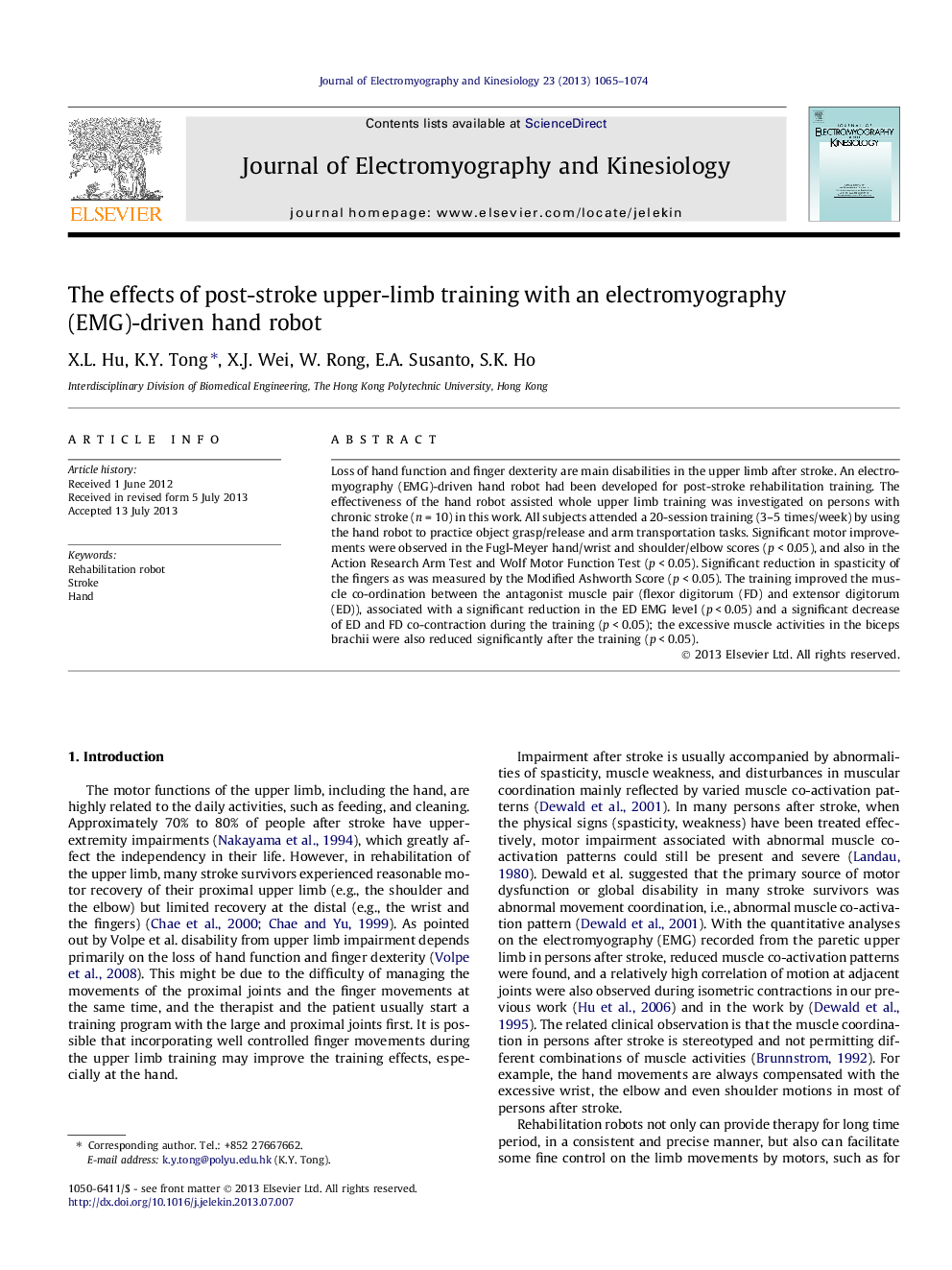| Article ID | Journal | Published Year | Pages | File Type |
|---|---|---|---|---|
| 6210521 | Journal of Electromyography and Kinesiology | 2013 | 10 Pages |
Loss of hand function and finger dexterity are main disabilities in the upper limb after stroke. An electromyography (EMG)-driven hand robot had been developed for post-stroke rehabilitation training. The effectiveness of the hand robot assisted whole upper limb training was investigated on persons with chronic stroke (n = 10) in this work. All subjects attended a 20-session training (3-5 times/week) by using the hand robot to practice object grasp/release and arm transportation tasks. Significant motor improvements were observed in the Fugl-Meyer hand/wrist and shoulder/elbow scores (p < 0.05), and also in the Action Research Arm Test and Wolf Motor Function Test (p < 0.05). Significant reduction in spasticity of the fingers as was measured by the Modified Ashworth Score (p < 0.05). The training improved the muscle co-ordination between the antagonist muscle pair (flexor digitorum (FD) and extensor digitorum (ED)), associated with a significant reduction in the ED EMG level (p < 0.05) and a significant decrease of ED and FD co-contraction during the training (p < 0.05); the excessive muscle activities in the biceps brachii were also reduced significantly after the training (p < 0.05).
